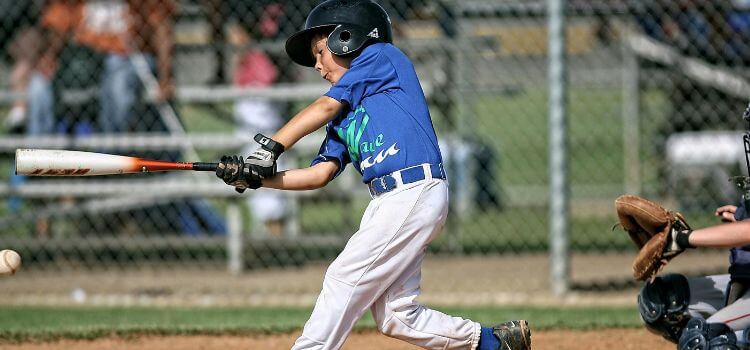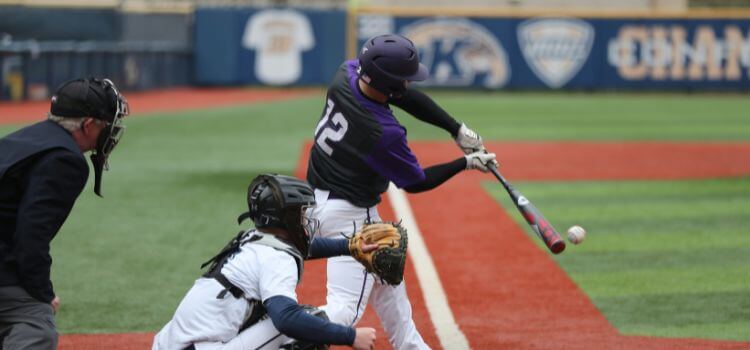As an Amazon Associate, I earn from qualifying purchases.
In the world of baseball, hitters face countless challenges, and one notorious difficulty for many is the stinger. Often underestimated, stingers can make or break a player’s confidence, performance, and ability to handle specific pitches. This guide offers insights into why hitters fear stingers, the causes, and effective methods to overcome them, so they can return to the plate with power and confidence.
What is a Stinger?

A stinger, also known as a “bat sting” or “bat bite,” is a painful vibration that occurs when a baseball is hit outside the bat’s sweet spot. Instead of absorbing the impact, the bat transfers the energy into the hitter’s hands, often resulting in a sharp, stinging sensation that can radiate up to the wrists and forearms. This sensation can distract hitters, lower their performance, and cause hesitation or apprehension about returning to the batter’s box.
Key Factors Causing Stingers
Understanding the factors behind stingers is essential for hitters, coaches, and trainers aiming to address and prevent this issue:
Off-Center Hits: The most common cause of stingers is hitting the ball away from the bat’s “sweet spot” (the optimal point on the bat where contact feels smooth and powerful). Contact outside this zone, such as near the handle or end cap, leads to painful vibrations.
Bat Material: Wooden bats and certain metal bats are more prone to vibrations when mishits occur. Aluminum and composite bats, which are often lighter and more flexible, can also create a stinging sensation depending on their design and the quality of the hitter’s connection.
Pitch Speed and Spin: High-speed pitches, especially those with intense spin, increase the risk of stingers. Fastballs, cutters, and sliders can create challenging connections, heightening the likelihood of an uncomfortable bat vibration.
Psychological Impact of Stingers on Hitters

Reduced Confidence at the Plate
Repeated stingers can affect a player’s mental approach, causing hesitation and fear. A hitter dealing with stingers may start to doubt their technique or become hesitant to swing. This trepidation not only affects their physical approach to the game but also diminishes their confidence over time.
Unconscious Avoidance of Certain Pitch Types
Hitters who repeatedly experience stingers on specific pitches—such as high-speed fastballs or breaking balls—may start to avoid these pitches subconsciously. Over time, this avoidance can affect a player’s ability to make consistent contact and limit their pitch selection, affecting overall performance.
Physical Fatigue and Strain
Beyond the mental toll, stingers can result in fatigue, soreness, and even hand or wrist injuries if persistent. The fear of re-experiencing that pain can lead players to change their swings or alter hand positioning, which can exacerbate the problem rather than prevent it.
Strategies to Overcome Stingers

Hitters and coaches can employ several effective strategies to mitigate and overcome the pain and fear associated with stingers. Here are actionable techniques to build resilience and confidence at the plate:
Focus on Sweet Spot Hitting
Practice Drills for Better Contact
Improving a hitter’s ability to consistently make contact with the bat’s sweet spot is essential. Drills, such as hitting from a tee and soft toss, allow players to hone their hand-eye coordination, ensuring they connect with the optimal part of the bat more often. These exercises also reinforce proper swing mechanics and instill muscle memory for improved accuracy in live games.
Technology-Assisted Training
Bat sensors and video analysis tools can be incredibly useful for diagnosing mishits. These technologies provide detailed feedback on where the bat makes contact, allowing hitters to adjust their swing mechanics for a more effective and consistent strike.
Choosing the Right Bat
Material and Design Considerations
Not all bats are created equal. While wooden bats may be traditional, composite bats with anti-vibration technology can significantly reduce the risk of stingers. Composite bats are designed with inner layers that absorb impact more effectively, allowing hitters to maintain control and minimize discomfort.
Proper Grip and Weight Balance
A balanced bat, suited to the player’s strength and mechanics, can prevent mishits that often lead to stingers. Grip positioning also plays a key role—players should ensure they’re gripping the bat with relaxed wrists and fingers, avoiding unnecessary tension that can worsen the impact.
Mental Conditioning Techniques
Visualization and Positive Reinforcement
Hitters can overcome the fear of stingers through visualization techniques. By imagining successful hits, free of stingers, players can condition their minds to focus on positive outcomes rather than pain or discomfort. Positive reinforcement from coaches and teammates also bolsters a hitter’s self-assurance and ability to face stingers head-on.
Breathing and Relaxation Exercises
Nervousness can make hitters grip the bat tighter, increasing the likelihood of experiencing a stinger. Encouraging deep breathing exercises helps players stay calm, relaxed, and composed, reducing the intensity of the hit and lowering the chance of stingers.
Physical Conditioning and Hand Strength
Forearm and Grip Strengthening Exercises
Building strength in the hands and forearms improves a hitter’s ability to absorb impact effectively. Exercises such as wrist curls, grip squeezes, and finger stretches target the muscles used in hitting, allowing for greater resistance to painful vibrations.
Flexibility Drills for Wrists and Shoulders
Flexibility is crucial for absorbing impact with minimal discomfort. Stretching exercises that focus on the wrists and shoulders increase joint mobility, making it easier for hitters to react to fast pitches without feeling significant strain.
Frequently Asked Questions
How can I avoid stingers when batting?
To avoid stingers, focus on consistently hitting the ball on the bat’s sweet spot through targeted practice drills. Choosing a bat with anti-vibration technology, adjusting grip technique, and strengthening hand and wrist muscles can also reduce the risk of stingers.
Do composite bats help reduce stingers?
Yes, composite bats are often designed with materials that absorb impact better than traditional wood or aluminum bats. Many composite bats also feature anti-vibration technology, which can help minimize stinging sensations.
How does fear of stingers affect a hitter’s performance?
Repeated stingers can lead to hesitation, fear, and reduced confidence, which may cause a hitter to avoid certain pitches subconsciously or alter their swing. This fear can be managed through mental conditioning, visualization, and relaxation techniques.
What’s the proper way to practice hitting the right sweet spot?
Hitters can improve their accuracy and sweet spot contact through practice drills like tee work and soft toss. These controlled exercises help build muscle memory, allowing players to more consistently make solid contact in live game situations.
Are there specific bats designed to reduce stingers?
Yes, many modern bats are designed with anti-vibration technology and composite materials to reduce stingers. When selecting a bat, look for those marketed with features like vibration dampening or enhanced sweet spot coverage to minimize discomfort.
Final Thoughts
Every hitter faces challenges at the plate, and for many, stingers are an inevitable part of the game. However, by understanding the causes, addressing both mental and physical aspects, and utilizing the right equipment, players can reduce their fear and improve their performance. With practice, confidence, and the right techniques, hitters can overcome the sting and step up to the plate with renewed resilience.
As an Amazon Associate, I earn from qualifying purchases.
Leave a Reply